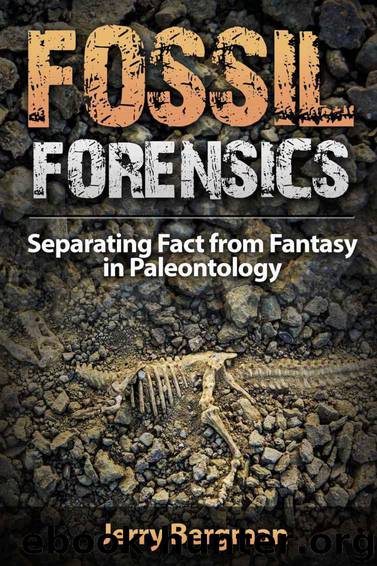Fossil Forensics: Separating Fact from Fantasy in Paleontology by Bergman Jerry & Snow Philip & Sherwin Frank & Johnson Fred & Stuart MaryAnn

Author:Bergman, Jerry & Snow, Philip & Sherwin, Frank & Johnson, Fred & Stuart, MaryAnn [Bergman, Jerry]
Language: eng
Format: epub
Publisher: BP Books
Published: 2017-07-16T21:00:00+00:00
Furthermore, to evolve a fish from a worm, the worm nervous and vascular systems would need to be flipped over because the major fish organs are upside-down when compared to the worm organs. Furthermore, although some worms “have tiny eye-spots, ear-stones, and tactile or taste organs,” these structures all are relatively simple and microscopic in contrast to the fish’s well-developed eyes, rostrum, and a large head with an advanced vertebrate brain (Kyle, 1926, p. 3).
Furthermore, most round and flat worms lack a heart whereas fish have a very well-developed, powerful muscular pump that is located ventrally just behind the head. Each of the aforementioned unique fish features must have evolved, and one of the easiest organs to document should have been the evolution of fins because they appear both “early” in the fossil record and with great clarity.
Professor Bond described the “typical scenario of what could have occurred” to evolve fishlike vertebrates from their hypothesized precursor (1996, p. 78). His model postulates a free-swimming invertebrate with a notochord, a ventral heart, and pharynx clefts that evolved into fish. Bond notes that radical changes in the environment first must have occurred to evolve fish, but the specific changes required for fish evolution are not present in the geological record.
Instead of starting with a worm, Bond’s fish evolution scenario began with a creature already very much like a fish. He then speculated that: “One can imagine that there could have been ascidians or related invertebrates that remained in the tadpole larval stage, reproduced, and formed the evolutionary basis for the more complex early vertebrates” (Bond, 1996, p. 78). Bond postulated that a lancelet-like animal is “a reasonable model for what the forerunner of the fishlike vertebrates could have been like” but he cited no evidence, fossil or otherwise, for this admittedly hypothetical scenario (Bond, 1996, p. 78). In conclusion, what is known about postulated fish ancestors is summarized by Ommanney as follows:
somewhere, either in the oceans or in some fresh-water pond or stream of that far-off Cambrian period, was a creature that would eventually give rise to the fishes …. What this creature looked like, how it functioned and lived, we can only surmise …. Many theories have been advanced for its origin. Some held that it evolved from some form of segmented worm, others that it developed from an arthropod, a phylum that includes spiders, insects and crustaceans. Most likely, however, on the basis of biochemical and structural evidence, is the hypothesis that this ancestral creature arose from a form similar to the larva of an echinoderm, a group known to us today through the starfishes and sea urchins (1971, p. 60).
Download
This site does not store any files on its server. We only index and link to content provided by other sites. Please contact the content providers to delete copyright contents if any and email us, we'll remove relevant links or contents immediately.
Sapiens: A Brief History of Humankind by Yuval Noah Harari(13041)
The Tidewater Tales by John Barth(12026)
Do No Harm Stories of Life, Death and Brain Surgery by Henry Marsh(6333)
Mastermind: How to Think Like Sherlock Holmes by Maria Konnikova(6228)
The Thirst by Nesbo Jo(5779)
Why We Sleep: Unlocking the Power of Sleep and Dreams by Matthew Walker(5637)
Sapiens by Yuval Noah Harari(4531)
Life 3.0: Being Human in the Age of Artificial Intelligence by Tegmark Max(4497)
The Longevity Diet by Valter Longo(4444)
The Rules Do Not Apply by Ariel Levy(3899)
The Immortal Life of Henrietta Lacks by Rebecca Skloot(3821)
The Body: A Guide for Occupants by Bill Bryson(3791)
Why We Sleep by Matthew Walker(3768)
Animal Frequency by Melissa Alvarez(3750)
Yoga Anatomy by Kaminoff Leslie(3697)
Barron's AP Biology by Goldberg M.S. Deborah T(3629)
The Hacking of the American Mind by Robert H. Lustig(3576)
All Creatures Great and Small by James Herriot(3509)
Yoga Anatomy by Leslie Kaminoff & Amy Matthews(3392)
